Anyone have Pinky Winky?? How is it doing??
sandykk
16 years ago
Featured Answer
Sort by:Oldest
Comments (47)
ostrich
16 years agolast modified: 9 years agobogie
16 years agolast modified: 9 years agoRelated Discussions
Pinky Winky
Comments (2)Hello, margaret700.123. If your soil is really "very bad soil," you may want to send a sample to your Agriculture Extension Service for analysis in order to determine what minerals it has too few/too many of. The test result should also offer suggestions on how to correct things. Some nurseries also provide this service free (they hope to sell the amendments that your soil needs). Growing hydrangeas in dense shade, pruning just as it is getting ready to produce flower buds in June-ish, having a soil pH that is extremely acidic/alkaline and/or having too much nitrogen in the soil could cause your PW to not bloom. There are kits sold at nurseries that will give you some idea of how much nitrogen, phosphorus and pottasium. It is a general idea and not as good as a formal soil test, mind you. These kits do not check for other "minor" but important minerals; the soil test does. A newly planted shrub can be fed in June about 1/2 to 1 cup of compost, composted manure, cottonseed meal or you could apply a general-purpose slow-release chemical fertilizer. Maintain the shrub well mulched year around (3 to 4 inches). Luis...See MoreHow is your Pinky Winky doing?
Comments (7)I planted one early last fall. It was started just that year, so very small - only 2 branches. This winter my dog stepped on it and took it down to one branch. I would say it was the latest of my hydrangeas this year to leaf out (I also have 3 Little Lambs & 1 Burgundy Lace - they were also planted last year but probably 2nd or 3rd year plants). But overall I have been pleased...it has at least tripled in size with at around 8 striking red branches loaded with clean foliage at about 2' high. No signs of buds yet - 2 of my LL's do, one does not & the Burgundy Lace does not yet either. It is young though so my comments are limited, so far everything seems healthy but I may have to wait another year before I see blooms and some size to it. Compared to my LL's, I also think its less vigourous - but then those little guys are awesome....See MoreQuick Fire & Pinky Winky: size & pics please
Comments (5)Hi Whaas, thank you so much for the response, it's great, too, that you are also in Wisconsin. I will take a look at the Tickled Pink. What is it about Tickled Pink that makes you recommend it so highly (I saw that you recommended it to another person, as well...) Does Quick Fire get cut to the ground each spring or does one leave it alone? I cut my Annabelle hydrangeas to the ground every spring. Last year, I did an experiment and left them all uncut, but I did not like how they looked quite so much, so decided that cutting was for me. I also have Endless Summer, which isn't the greatest performer, so I have it in a spot that doesn't matter how it does...that one, I just clean up once it has leafed out and I can see what is live and what isn't. I think I am going to give the Quick Fire a try...if you think it's a rockstar, that's good enough for me! They are only 8.99 on sale at Shopko right now, $20 if I'd go with the 3 gallon pot, but it seems like they grow so fast anyway, that I'd be better off saving the $....See MorePinky Winky and Vanilla Strawberry question
Comments (7)The Pinky will get quite large and is a very upright grower. The Vanilla I just got this year in a 5 gallon pot and is supposed to be a couple feet smaller than the Limelight. One of the main reasons it appealed to me. The buds were very upright until lately in full bloom. Defentily flopped. I read a 5 year study on many Paniculuta Hydrangeas. Both of these were included in it. They tried many different pruning techniques to both across the years. The Pinky likes a medium to hard prune and the Vanilla likes only a light pruning or it will flop. I enjoy hard pruning my Limelights for the extra large blooms and did not learn this about the Vanilla Strawberry until after I purchased it. Here is a picture right after I bought the Vanilla. Here is a promo pic of the Vanilla. Notice you can not see their hands. Because they are holding up the blooms...LOL... Here is some pics of it recently Here is a pic of my Pinky Winky...See Moreostrich
16 years agolast modified: 9 years agosandykk
16 years agolast modified: 9 years agobogie
16 years agolast modified: 9 years agoornata
16 years agolast modified: 9 years agovickysgarden
16 years agolast modified: 9 years agotholtz
16 years agolast modified: 9 years agond_garden_gal_71
16 years agolast modified: 9 years agoostrich
16 years agolast modified: 9 years agobogie
16 years agolast modified: 9 years agomrgpag SW OH Z5/6
16 years agolast modified: 9 years agond_garden_gal_71
16 years agolast modified: 9 years agoostrich
16 years agolast modified: 9 years agoego45
16 years agolast modified: 9 years agoostrich
16 years agolast modified: 9 years agoteri55
16 years agolast modified: 9 years agosilvergold
16 years agolast modified: 9 years agohammybee
15 years agolast modified: 9 years agojasper60103
15 years agolast modified: 9 years agopearlgirl
15 years agolast modified: 9 years agodiane_v_44
15 years agolast modified: 9 years agojasper60103
15 years agolast modified: 9 years agomrgpag SW OH Z5/6
15 years agolast modified: 9 years agolydiajean
15 years agolast modified: 9 years agoditas
15 years agolast modified: 9 years agokathym
15 years agolast modified: 9 years agokjwill5_aol_com
13 years agolast modified: 9 years agoUser
13 years agolast modified: 9 years agonickchurch
9 years agolast modified: 9 years agoNHBabs z4b-5a NH
9 years agolast modified: 9 years agoamyajohnston
8 years agoteri55
8 years agohyed
8 years agohyed
8 years agohyed
8 years agoNHBabs z4b-5a NH
8 years agotaskmis
7 years agogardengal48 (PNW Z8/9)
7 years agoNHBabs z4b-5a NH
7 years agolast modified: 7 years agoluis_pr
7 years agoErika Conn
2 years agoluis_pr
2 years agonicole5943
2 years agoluis_pr
2 years agolast modified: 2 years agoteri55
2 years ago
Related Stories

ORANGEColor Guide: How to Work With Orange
Orange is the most controversial color in the spectrum, but its warmth and personality can charm almost anyone
Full Story
COLORPretty Pink Color Schemes, Subtle to Sensational
How do we love pink? Let us count the ways: soft, sassy, with chartreuse and electric blue and, yes, even red ...
Full Story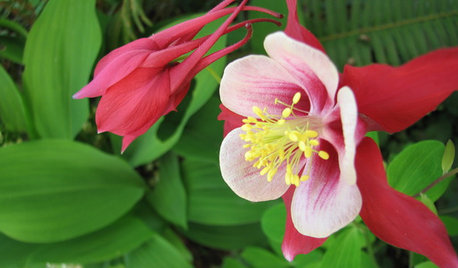
GARDENING FOR BUTTERFLIESGreat Design Plant: Columbine Grows Happily in Shade and Sun
Its ethereal beauty comes from complex forms and wide-ranging colors, but columbine’s benefits are highly attractive too
Full Story
MOST POPULARSo You Say: 30 Design Mistakes You Should Never Make
Drop the paint can, step away from the brick and read this remodeling advice from people who’ve been there
Full Story
KITCHEN DESIGNCountertop and Backsplash: Making the Perfect Match
Zero in on a kitchen combo you'll love with these strategies and great countertop-backsplash mixes for inspiration
Full Story
DOORSDIY Project: Upgrade That Ugly Door!
Turn a Blah Hollow-Core Door Into Today's Cover Story
Full Story
REMODELING GUIDESAre You Gutsy Enough to Paint Your Floor White?
Sleek and glossy or softened by wear, white floors charm
Full Story
DIY PROJECTSReinvent It: Penny for Your Thoughts on This Antiqued Table?
Let's take it from the top. Make over a routine table with pennies and antiquing for a unique new look
Full Story
MOST POPULARRethinking Beige in a World Gone Gray
Gray, the ‘it’ neutral of recent years, has left beige in the shade. But is it time to revisit this easy-on-the-eyes wall color?
Full Story
ENTERTAININGHouzz Guide: How to Set a Table
Here’s everything you need to know to prep your table for a get-together
Full Story


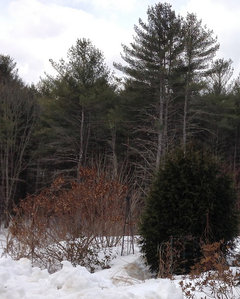
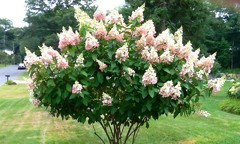
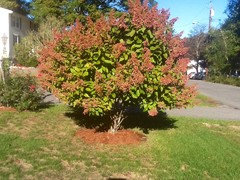

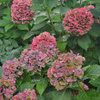
ostrich